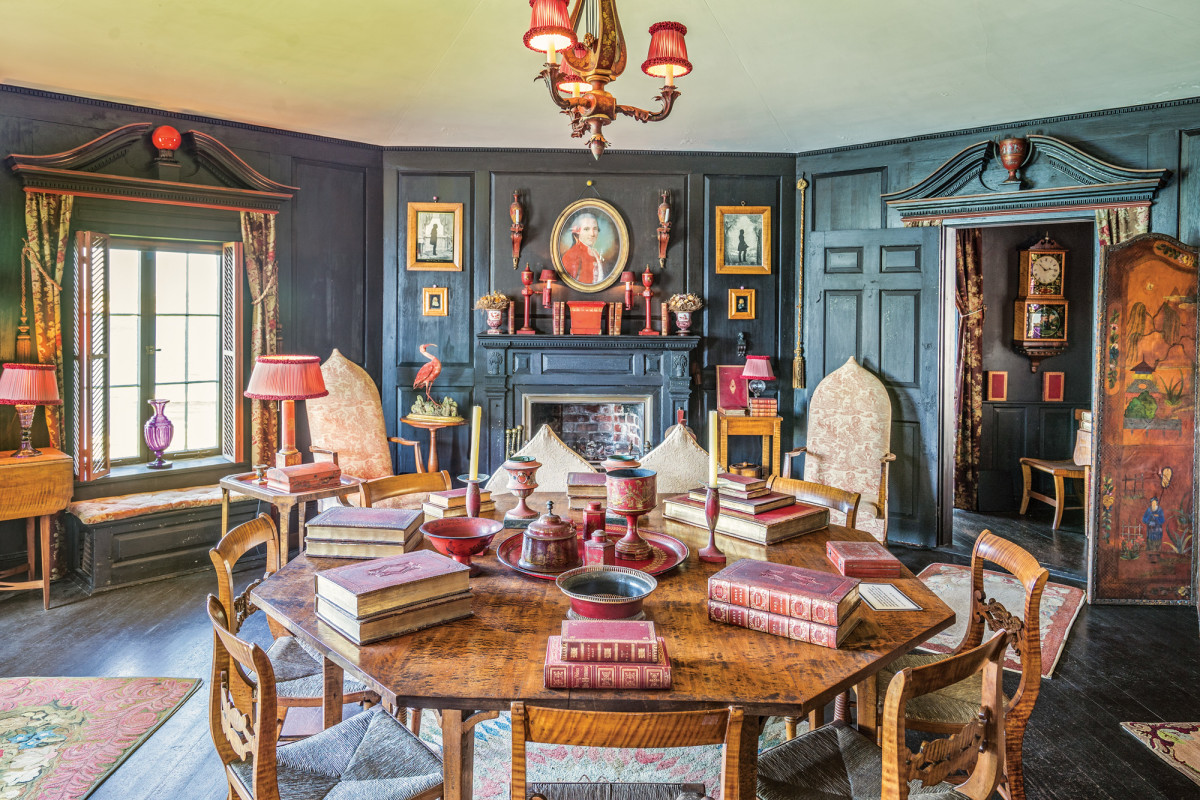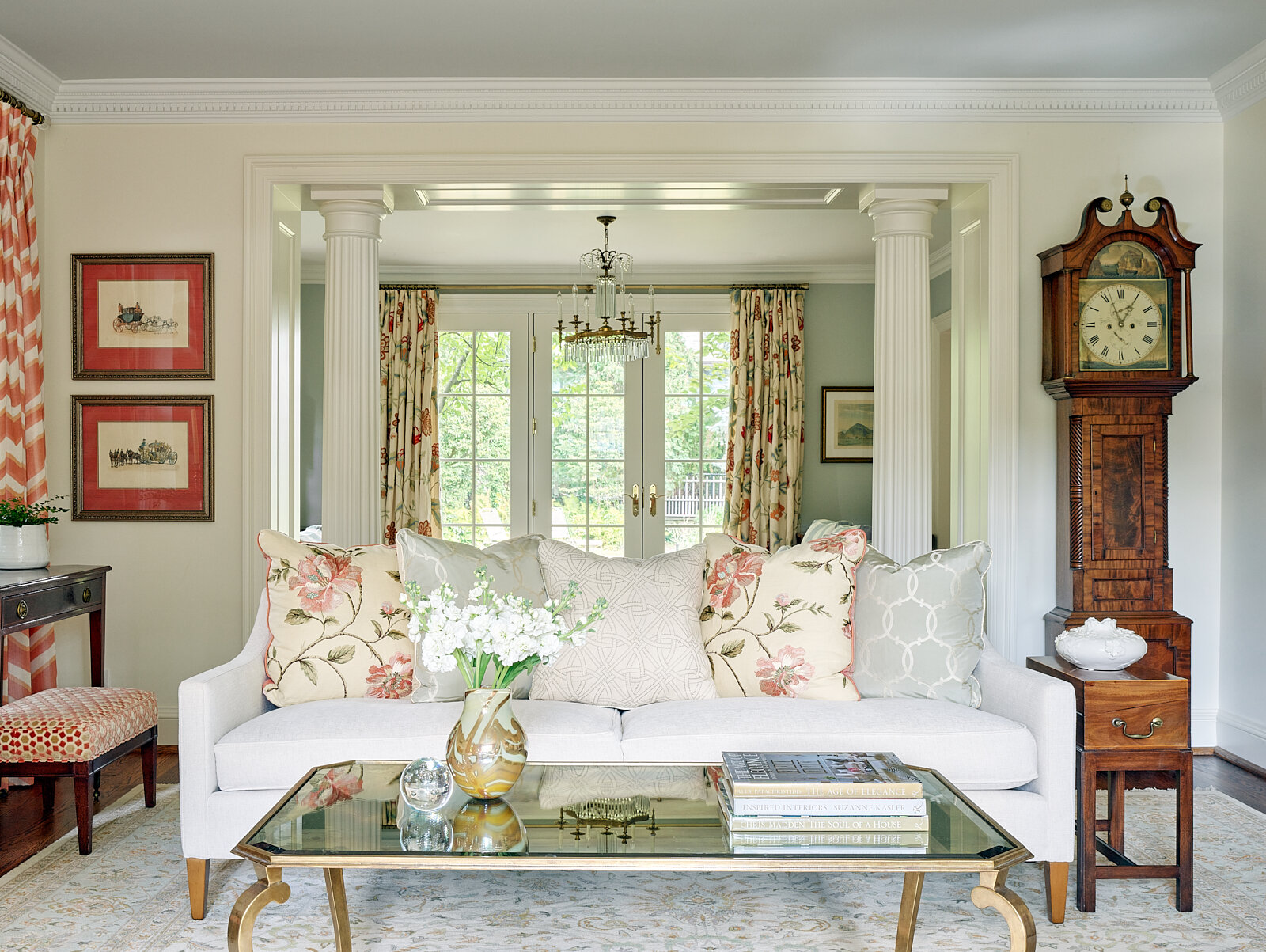Colonial Revival Interior Design Elements

Colonial Revival interior design evokes the styles of the American colonial period, incorporating elements of Georgian, Federal, and other early American architectural traditions. Key characteristics include:
- Symmetrical arrangements and clean lines
- Use of natural materials, such as wood, brick, and stone
- Simple, functional furniture with straight lines and minimal ornamentation
- Decorative elements inspired by nature, such as floral motifs and animal prints
Furniture Styles
Colonial Revival interiors often feature furniture made from mahogany, cherry, or maple. Common styles include:
- Queen Anne chairs with cabriole legs and carved details
- Chippendale chairs with straight legs and pierced splats
- Windsor chairs with turned spindles and rush seats
- Four-poster beds with testers and curtains
- Hutch cabinets with glazed doors and paneled sides
Decorative Elements
Colonial Revival interiors use decorative elements that reflect the simplicity and functionality of the period. These include:
- Wallpapers with floral or geometric patterns
- Curtains and upholstery in natural colors, such as beige, blue, and green
- Brass or pewter candlesticks and sconces
- Ceramic plates and bowls with blue and white designs
- Wooden bowls and trenchers
Architectural Details
Colonial Revival interiors incorporate architectural details that enhance the sense of authenticity. These include:
- Moldings and cornices with simple profiles
- Fireplaces with mantels and overmantels
- Wide-plank flooring in natural wood tones
- Paneling on walls and ceilings
- Built-in cabinetry
Color and Pattern in Colonial Revival Interiors

Colonial revival interior design – Colonial Revival interiors evoke a sense of history and tradition, and color and pattern play a significant role in creating this ambiance. The color palettes used in these interiors are typically warm and inviting, with a focus on natural hues such as beige, cream, brown, and green. These colors create a cozy and comfortable atmosphere, reminiscent of the homes of early American settlers.
Patterns were also an important element of Colonial Revival interiors, and they were incorporated into textiles, wallpaper, and other decorative elements. Popular motifs included floral designs, stripes, checks, and plaids. These patterns added visual interest and a touch of elegance to the rooms, while also reflecting the craftsmanship and attention to detail that was characteristic of the Colonial era.
Textiles, Colonial revival interior design
Textiles played a vital role in Colonial Revival interiors, and they were often used to add color and pattern to the rooms. Common fabrics included linen, cotton, and wool, which were used to create curtains, upholstery, and bedding. These fabrics were often decorated with simple patterns, such as stripes or checks, or with more elaborate floral or geometric designs.
Wallpaper
Wallpaper was another popular way to add color and pattern to Colonial Revival interiors. Wallpapers were available in a wide variety of designs, from simple stripes and florals to more elaborate scenes and landscapes. These wallpapers helped to create a sense of warmth and intimacy in the rooms, and they also added a touch of historical charm.
Other Decorative Elements
In addition to textiles and wallpaper, there were a number of other decorative elements that were used to add color and pattern to Colonial Revival interiors. These elements included rugs, paintings, and ceramics. Rugs were often made of wool or cotton, and they were often decorated with geometric or floral patterns. Paintings were typically landscapes or portraits, and they helped to add a touch of elegance to the rooms. Ceramics were also popular decorative elements, and they were often used to display flowers or other objects.
Furnishings and Decor in Colonial Revival Interiors: Colonial Revival Interior Design

Colonial Revival interiors are characterized by their warm and inviting atmosphere, with a focus on comfort and functionality. The furnishings and decor in these rooms are typically made from natural materials such as wood, leather, and wool, and they often feature simple, clean lines. The overall effect is one of understated elegance, with a touch of formality.
When designing a room layout that reflects the Colonial Revival style, it is important to keep in mind the following principles:
- Symmetry: Colonial Revival interiors are often symmetrical, with furniture arranged in pairs or groups on either side of a central focal point. This creates a sense of balance and order.
- Functionality: The furniture in a Colonial Revival interior should be both comfortable and functional. Pieces should be chosen that are appropriate for the size and shape of the room, and they should be arranged in a way that allows for easy movement and conversation.
- Comfort: Colonial Revival interiors are designed to be comfortable and inviting. Furniture should be upholstered in soft fabrics, and there should be plenty of pillows and throws to create a cozy atmosphere.
The following table lists the essential furniture pieces for a Colonial Revival living room, dining room, and bedroom:
| Room | Essential Furniture Pieces |
|---|---|
| Living Room | Sofa, armchair, side table, coffee table, bookcase, fireplace |
| Dining Room | Table, chairs, sideboard, hutch, chandelier |
| Bedroom | Bed, nightstand, dresser, mirror, armoire |
In addition to furniture, there are a number of decorative accessories and artwork that can complement the Colonial Revival aesthetic. These include:
- Textiles: Colonial Revival interiors often feature textiles with traditional patterns, such as toile, chintz, and damask. These fabrics can be used for curtains, upholstery, and bedding.
- Accessories: Colonial Revival interiors often include decorative accessories such as candlesticks, picture frames, and vases. These accessories should be made from natural materials such as wood, metal, or glass.
- Artwork: Colonial Revival interiors often feature artwork that depicts historical scenes or landscapes. These paintings and prints can add a touch of formality and sophistication to a room.
By following these guidelines, you can create a Colonial Revival interior that is both stylish and inviting.
Colonial revival interior design evokes a sense of nostalgia for the grandeur of the past. With its intricate moldings, rich fabrics, and stately furniture, it’s a style that commands attention. For those who appreciate the aesthetics of colonial revival but prefer the convenience of modern living, a remote interior designer can help bring this classic look to life without the hassle of traditional in-person consultations.
By working with a remote designer, homeowners can access a wider pool of talent and enjoy the flexibility of working from anywhere.
Colonial revival interior design evokes a sense of grandeur and history, with its rich hues, ornate moldings, and classic furnishings. If you’re seeking to infuse your home with this timeless aesthetic, consider consulting with an interior design consultant near me.
They can guide you in selecting the perfect pieces to create a harmonious and inviting space that pays homage to the colonial era.